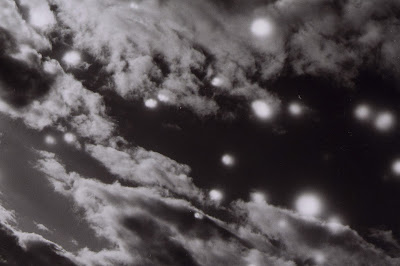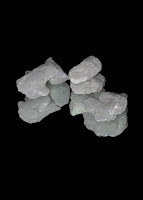This year Steambox plays host to
graduates who have come through the level 6 Higher National Diploma programme
at St Kevin’s College and represents the diversity, energy and unique character
that the college provides.
At the start of each college
year, students propose an idea, or a concept, which will be developed
photographically throughout the year. The development of project-based and
concept-based work is crucial in taking the development and understanding of
photography further - beyond the concentration on technical and skills-based
requirements that have traditionally been the framework of courses at Level 5
and Level 6 stages of photographic education. Instead, students are encouraged
to consider the fundamentals of photographic practice, but also the
complexities involved in creating larger, subject-driven projects to
realization in a public space.
There is a necessity, within
this process, of visual connection to a subject or theme. My role has been to
help students find their subject and translate it effectively. Together we
explore traditional and contemporary approaches to given themes and subject
matter and, further, find an aesthetic, conceptual and curatorial solution to
the individual’s own work. The process is supported on an on-going basis by a
series of workshops and refined through a succession of critical reviews
with the involvement of all tutors and peers. At these reviews we have
established a type of synergy between tutors and students which is part of the
success of this year’s exhibition. In
fact it is this closely-knit working relationship between tutors and students
that is the driving force behind our development and evolution at St Kevins over
the last number of years.
The work this year also reflects
a massive shift to Documentary practice in our overall programme. At the
beginning of the 2014/15 term, we introduced our Documentary Practice module -
which explored the basis of storytelling, narratives, research and contextual
aspects of photography from the ground up. Complementary to this we introduced
our book-making module. Hand in hand both of these practices have redirected
and enhanced the purpose and intent of our programme. The depth of work viewed
this year is a consequence of an ever evolving, ever changing course at St
Kevins College. The exhibition as a
whole is testament to the students themselves, to the investment they have made
in their own work throughout the year and the efforts they have made to produce
what is the largest and most ambitious St Kevin’s College Graduate exhibition
to date.
Martin Cregg
2nd Year Tutor
SELECTED WORKS 2016
Elizabeth Finnegans project 'Embedded' explores our relationship with the traditional act of turfcutting. Her approach of taking, burying and re-scanning portraits of a broad demographic of people expresses the deep connection we have to our landscape:
"People from all over the country and from all walks of life are bound together by a common thread. The tradition of cutting turf and spending time on our boglands is engrained in many of us. It’s a tradition that we do not want to lose. It is therefore very important that we let it be known to our public representatives, especially those seeking election to government, that we want part of the lands destroyed by Bord NaMona to be restored back again to its wild and natural state. Bord Na Mona has been harvesting peat on an industrial scale since 1940. They will cease this operation in 15 years time (by which time they will have depleted almost all of our boglands). What happens next is critical. It is important that some of that land be regenerated and allowed to return to being wetlands. My project consists of portraits of a broad demographic of people who work traditionally in family plots - images embedded, buried in the landscape, scanned and re-presented."


Jack Neiwiadomski's documentary mixes archive material, still life and representations of the abandoned asylum in Dublin:
"Built in 1896 as an overflow facility for the Richmond Asylum in Dublin City Centre, St.Ita's Hospital has dominated the peninsula at Portrane, Co Dublin since the late 19th Century. As the largest public contract ever undertaken in Ireland up to 1890, St Ita's was a notable feat of both 19th century civil and social engineering in Ireland. In it's heyday the asylum operated effectively at the centre of a self-sufficient mini-town and was looked upon as a 'model' for the care of the mentally ill. Ironically St. Itas has, in a contemporary sense, become almost a by-word for all that is wrong with the psychiatric system in Ireland. This documentary focuses on the sense of abandonment that exists in the hospital as it stands today – between the presence, character and history of the past and the inevitability of the future. It has been the subject of much public debate in the past decade or more but many questions as to the future of St. Ita's still remain unanswered. Yet, there are plans to rebuild and reuse the facilities for a new mental hospital in the near future."

Ivaylo Petrovs large-scale documentary project reflects on his mothers home town in Bulgaria:
"Since the collapse of Communism in 1989, rural life in Bulgaria has fallen into decline. The population has declined drastically over a short number of years as there has been a shift from large rural populations to urban migrations. In the years after World War II, 24.7 percent of the Bulgarian population lived in cities and 75.3% of them in rural areas. Unfortunately now this now flipped - 73% live in cities and 27% in rural areas. My work represents one small town, one small village and reflects on the destruction of rural life which occurred after the fall of Communism."
Jialin Long explores the little known condition of 'Trypophobia':
“This project is focusing on people who have a little known condition called Trypophobia - documenting their ‘immediate’ reaction when exposed to a particular type of image. These images include rotting tree trunks, holey cheese and the lotus seedpod. The condition is a claimed pathological fear of holes, particularly irregular patterns of holes, best represented in certain types of photographs which amplify the effect. The medical world hasn’t yet embraced the phobia as real. It isn’t listed in any major dictionary or in the Diagnostic and Statistical Manual of Mental Disorders. There are scientists working on investigate the visual elements behind this phobia. But thus far, most of their research has focused on identifying what types of images set off these reactions rather than why.”
Stanislav Nasypanyys documentary on ad-hoc ballet schools in Ireland
"Ireland has always been uneasy around classical ballet. The Catholic Church saw almost all dance forms, ballet included, as morally dubious. An "Irish" ballet had to find a place in Irish culture as the integration of traditional Irish dance forms with classical ballet. But developing ballet is not that easy. It is multi-layered, needs honest appraisal and demands professionalism at every level: early training, vocational training, professional opportunities, audience development. During the period of rapid economic growth in Ireland from the mid-1990s to the mid-2000s many immigrants arrived to Ireland bringing with them their culture and customs. Among immigrants were dancers of the classical ballet school. Some of them are arranged to work as teachers in the Irish ballet schools, but there are some of them who organized their own schools.."

Adrianna Deron has been collaborating with individuals in Deaf Village Ireland. A series of silent conversations and intimate portrait sessions with deaf people and those whose hearing is slowly diminishing. Through portraiture and text exchanges, the work sets out to explore the realities of hearing loss and percieved silence, whilst challenging the misconceptions and misinterpretations of deaf people in society.

Robert Le Roux 'Recovery': "This work considers the life changing or ending event of a car crash. It is an examination of the shattered debris left behind by vehicles involved on crash sites, after the car has been removed from the site. The work documents the only lasting traces of car crash sites - the debris left on the roadside by the collision. The size of the pieces your only indication of the severity of it with no idea of the outcome for both the occupants and the vehicle. It is also a close look at the damage and scars left on a vehicle itself. Like an organ donor, rushed almost instantly to a breakers yard to be stripped of any useable parts and the remainder crushed and recycled."
Amanda Lynchs work evokes a feeling of rebellion – the joys of mischief, debauchery and experimentation of people in their early 30’s.

Adrinne Johnston 'Chosen Field' - "My work is based on an unknown and hidden Neolithic site on Brewel Hill in Co. Kildare. The area in question was a contentious site part of an ongoing battle between the OPW and the then Landowner in 1973. Hidden within the landscape is a double-henged circle with sacred stones, which have been enclosed by trees-planted by the then landowner in an act of defiance against the OPW - who had declared the area as a National Monument and placed a protection order on it. The Neolithic stones were used by ancient people to determine the equinox and solstice. The stones have been positioned strategically in relation to the sun and seasonal cycles. Through research and close collaboration with the archaeologist Caimin O’ Brien I discovered that the stones ‘reveal’ themselves during dawn of the lesser known Vernal (spring) equinox - illuminating and heightening their presence and revealing their original purpose and meaning."

Sarah Kennedy has photographed her twin brothers for over two years in her project 'Out of Unison':
"David & Paul are identical twins. Our family have always been able to easily tell the difference between the two, unless they were sleeping. I began photographing them when they were 11 years old. They are currently 13. I want my photographs to translate the subtleties of their unique individuality, as well as the identical similarities they share. Every year, as they develop in unison, they experience massive changes - physically and mentally."

























































